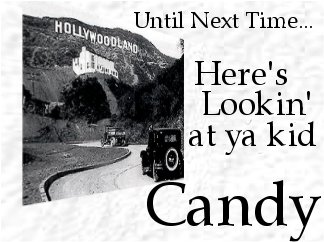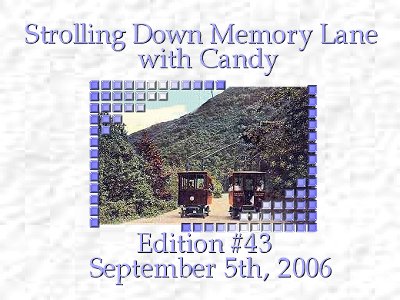
Growing up I knew it was where all the stars lived and worked, I knew that the palm trees there didn't quite look like the ones I grew up seeing in Florida....they kind of sparkled like they had been sprinkled with stardust...moviestardust!
But it didn't always look like that.....
"The Entertainment Capital of the World" Early Hollywood, when eucalyptus, cactus and weeds decorated it's early landscape:
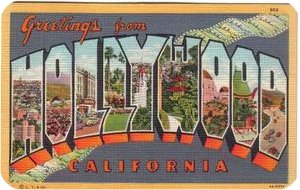
Hollywood! The most magical name in the world. However, years ago the land was originally inhabited by the friendly Cahuenga Indians. Indian ceremonials took place on the grounds where the Hollywood Bowl is now located. The Spanish established it as a way-station on the Camino Real. By 1852 the first home was built on the land. By the 1870's farmers discovered that the climate and geography were assets to their industry. Soon there were groves of lemons, oranges, figs and chermoyas.
Hollywood was founded in 1888 by Harvey Henderson Wilcox and his wife, Daeida Hartell Wilcox, as part of a residential development. One story for how it gots it's name is that it was Daeida who selected the name after she met a lady on a train whose summer residence in Illinois was called Hollywood. It was during that year that Hollywood saw its first train. In 1900 Sunset Boulevard was a tree-shaded country road.
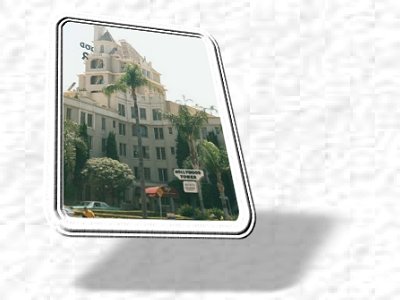
Laurel Canyon's Trackless Trolley, part of the Laurel Canyon Utilities Company, was founded in 1909. At a fare of 10 cents, cars could accommodate ten passengers at a time on a one-way trip uphill from Sunset Boulevard to Lookout Mountain Avenue. The trolleys were replaced by Stanley Steamer buses in 1915. The canyon itself became a mountain hideaway for many Hollywood celebrities, at that time termed "photo players," such as actress Bessie Love, who lived at the top of Lookout Mountain.
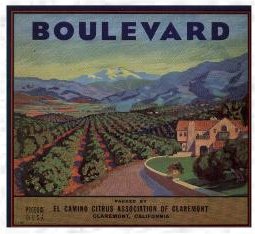
In 1910, the community voted to annex to the growing city of Los Angeles in order to assure a reliable water supply. That year the favorite horse and buggy ride was down Melrose Avenue, named after E.A. Melrose, whose ranch occupied most of Western Avenue to Wilton Boulevard and from Melrose to Santa Monica Boulevard. At that time, trees planted in 1880 lined the street (they were later cut down between 1922-1923).
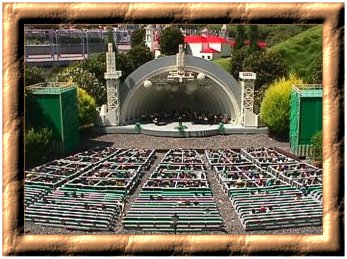
In the early 1900s, motion picture production companies from New York and New Jersey started moving to California because of the reliable weather. Although electric lights existed at that time, none were powerful enough to adequately expose film; the best source of illumination for movie production was natural sunlight. Besides the moderate, dry climate, they were also drawn to the state because of its open spaces and wide variety of natural scenery which could, of course, come in handy during film-making.
Another factor in Hollywood's development was its great distance from New Jersey, which made it more difficult for Thomas Edison to enforce his motion picture patents. At the time, Edison owned almost all of the patents relevant to motion picture production and, in the East, movie producers acting independently of Edison's Motion Picture Patents Company were often sued or enjoined by Edison and his agents. Thus, movie makers working on the West Coast could work unencumbered by Edison's control. If Edison sent agents to California, word would usually reach Los Angeles before the agents' arrival and the movie makers could simply escape to nearby Mexico.

The famous Hollywood Sign originally read "Hollywoodland". It was erected in 1923 to advertise a new housing development in the hills above Hollywood. For several years, the sign was left to deteriorate. In 1949, the Hollywood Chamber of Commerce stepped in and offered to remove the last four letters and repair the rest.
On January 22, 1947, the first commercial TV station west of the Mississippi River, KTLA, began operating in Hollywood. In December of that year, the first Hollywood movie production was made for TV, The Public Prosecutor. And in the 1950s, music recording studios and offices began moving into Hollywood. Other businesses, however, continued to migrate to different parts of the Los Angeles area, primarily to Burbank. Much of the movie industry remained in Hollywood, although the district's outward appearance changed.
In 1952, CBS built CBS Television City on the corner of Fairfax Avenue and Beverly Boulevard on the former site of Gilmore Stadium. CBS's expansion into the Fairfax District pushed the unofficial boundary of Hollywood further south than it had been. CBS's slogan for the shows taped there was "From Television City in Hollywood..."
The famous Capitol Records building on Vine Street just north of Hollywood Boulevard was built in 1956. It is a recording studio not open to the public, but its unique circular design looks like a stack of old 45rpm vinyl records.
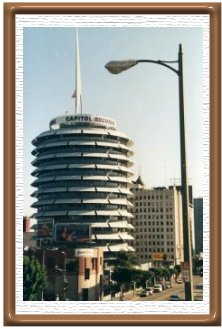
We saw the homes and the kidney shaped swimming pools of the stars from our youth and thought that was true glamor, but I wonder what those stars would think of the homes and lifestyles of some of the residents today.
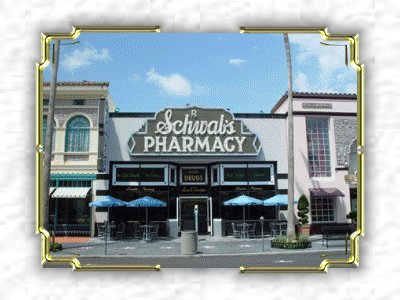
A serious problem for Hollywood since the 1960s has been its attractiveness for desperate runaways. Every year, hundreds of runaway adolescents flee broken homes across North America and flock to Hollywood hoping to become movie stars, as portrayed by the lyrics of the 1960s Burt Bacharach song "Do You Know the Way to San Jose?" whose lyrics include the words: "All the stars / That never were / Are parking cars / And pumping gas." Such individuals soon discover that they have extremely slim chances of competing against professionally trained actors. Many of them end up sinking into homelessness, which is a problem in Hollywood for adults as well as youth.
For every star that made it there are a million broken dreams. There was a character in the movie "Pretty Woman" who said it best...
